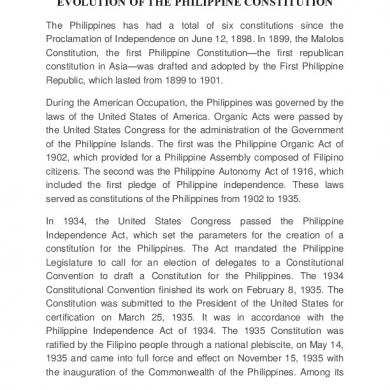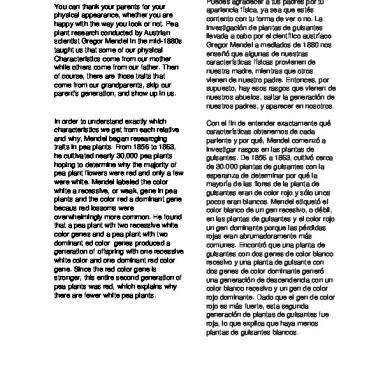Evolution Of Media In The Philippines.docx
This document was uploaded by user and they confirmed that they have the permission to share it. If you are author or own the copyright of this book, please report to us by using this DMCA report form. Report DMCA
Overview
Download & View Evolution Of Media In The Philippines.docx as PDF for free.
More details
- Words: 238
- Pages: 7
Loading documents preview...
EVOLUTION OF MEDIA IN THE PHILIPPINES
1500 PRE-COLONIAL TRACES Baybayin or Alibata (known in Unicode as the Tagalog script) is a pre-Hispanic Philippine writing system that originated from the Javanese script Old Kawi. The writing system is a member of the Brahmic family and is believed to be in use as early as the 14th century. It continued to be in use during the Spanish colonization of the Philippines up until the late 19th Century. The term baybayin literally means spelling. Closely related scripts are Hanunoo, Buhid, and Tagbanwa.
1811 THE PRINT INDUSTRY AND THE FILIPINO FREEDOM This is where Philippines was introduced to books, magazines, and newspapers like "La Solidaridad" by the Spaniards who colonized the Philippines for about 333 years. When the Filipinos got the freedom, the Americans then taught English language and other forms of media like newspapers. On the other hand, the Japanese put media run under tight control until the country was liberated form the Japanese rule.
1860 THE INDUSTRIAL AGE Hand tools and power-driven machines are starting to develop in this age. The printing press spread within several decades to over two hundred cities in a dozen European countries.In the 16th century, with presses spreading further afield, their output rose tenfold to an estimated 150 to 200 million copies.The operation of a press became synonymous with the enterprise of printing, and lent its name to a new branch of media, "the press".
1500 PRE-COLONIAL TRACES Baybayin or Alibata (known in Unicode as the Tagalog script) is a pre-Hispanic Philippine writing system that originated from the Javanese script Old Kawi. The writing system is a member of the Brahmic family and is believed to be in use as early as the 14th century. It continued to be in use during the Spanish colonization of the Philippines up until the late 19th Century. The term baybayin literally means spelling. Closely related scripts are Hanunoo, Buhid, and Tagbanwa.
1811 THE PRINT INDUSTRY AND THE FILIPINO FREEDOM This is where Philippines was introduced to books, magazines, and newspapers like "La Solidaridad" by the Spaniards who colonized the Philippines for about 333 years. When the Filipinos got the freedom, the Americans then taught English language and other forms of media like newspapers. On the other hand, the Japanese put media run under tight control until the country was liberated form the Japanese rule.
1860 THE INDUSTRIAL AGE Hand tools and power-driven machines are starting to develop in this age. The printing press spread within several decades to over two hundred cities in a dozen European countries.In the 16th century, with presses spreading further afield, their output rose tenfold to an estimated 150 to 200 million copies.The operation of a press became synonymous with the enterprise of printing, and lent its name to a new branch of media, "the press".
Related Documents

Evolution Of Media In The Philippines.docx
January 2021 2
The Evolution Of Chiropractic
February 2021 2
The Evolution Of Ornaments
February 2021 2
Levels Of Selection In Evolution
March 2021 0
The Evolution Of The Vampire
January 2021 1
Evolution Of The Philippine Constitution
February 2021 0More Documents from "Lewy Katrin S. Cortez"

Evolution Of Media In The Philippines.docx
January 2021 2
Ryo Hirata - Drawing Manga People And Poses
March 2021 0
Rootless Voicings For Jazz
February 2021 1

